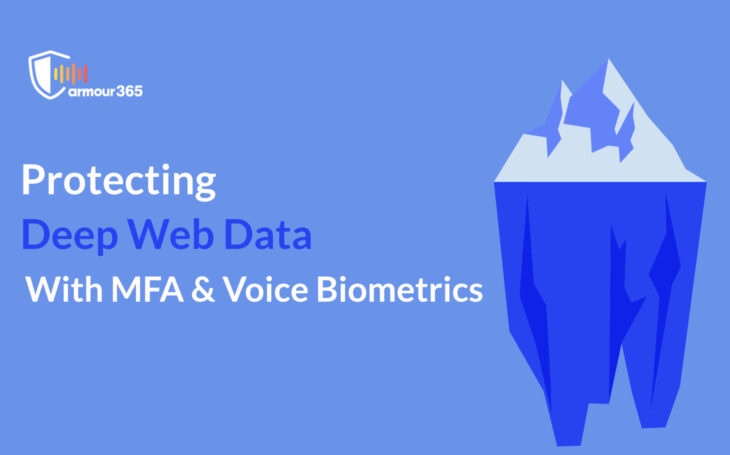
The surface web is everything that people like you and me access. It is readily accessible with the help of standard web browsers such as Google Chrome, Mozilla Firefox, Microsoft’s Edge, and more.
On the other hand, the deep web, or the invisible web, is information whose contents are not indexed by search engines.
By that logic, is Netflix a part of the deep web? Yes.
Fee-for-service sites such as Netflix grant access only to those who pay for the content. It is not freely available.
Private databases, fee-for-service sites, and the dark web are a part of the deep web.
To put it in simple words, the dark web refers to content that isn’t indexed by search engines. It is only accessible by a specialized web browser, and it is also a part of the deep web.
What Types Of Data Are There In The Deep Web?
Search engines use bots to crawl the web and add new content to its index. Experts estimate the size of the deep web at anywhere between 96% and 99% of the Internet. Most of the content on the deep web is legitimate, well, except for those that are on the dark web.
The deep web content mostly includes chat messages, email messages, restricted content on social media websites, bank statements, health records, content on paywalled sites, restricted educational content, government & private data, cloud data, etc. The types of data in the deep web are sensitive and private in nature, so they are available only to a specific set of people, that too only after they authenticate themselves each time they want access to it.
Why Is It Important To Protect Data In The Deep Web?
The types of data in the deep web are that of the military, government, journalists, whistleblowers, anti-censorship groups, and laymen like you and me. The size of the deep web is estimated to be 5,000 times larger than the surface web. It is imperative that the data in the deep web be protected at all costs.
The contents on the deep web are not indexed by the search engines, therefore they are not publicly available unless the user can authenticate themselves.
Imagine anyone gaining access to your medical records or financial statements just by logging on to the internet. That’s scary, right?.
Every type of data that is restricted stays that way for a reason. The reason why search engines cannot index content on the deep web is because the information is private. When private information is leaked, it can lead to financial losses, drop in productivity, lack of trust in systems, reputational damage, affect business continuity, and legal liability.
Benefits of using MFA & Voice Biometrics To Protect Data In The Deep Web:
As we have mentioned earlier in this article, data on the deep web is sacrosanct, private, and confidential. Seeing hordes of their customer data floating around in the web underworld isn’t the nicest thing to experience for any business.
Let us look at how using multi-factor authentication and voice biometrics helps protect data on the deep web.
#1 Efficient and Convenient Authentication:
Although using multiple factors for authentication can be a bit time-consuming for a user, voice biometrics trumps all of them. It is easy, quick, and the entire authentication process gets completed in a few seconds. For instance, AI-powered voice biometrics software like armour365™ recognizes a user’s voice and authenticates the user in less than two seconds.
For voice biometrics, callers do not have to provide any code or PIN, although we would still advise you to add one factor just for that extra layer of security.
Voice biometrics is ideal for omnichannel deployment as they can be accessed across all of the company’s customer channels. Since the customer’s voiceprint is already added, both active and passive voice recognition methods can be used based on the business requirements.
#2 Whitelist and Blacklist Users:
A voice biometric system has the ability to authenticate a user based on more than 100+ voice characteristics. It can compare a caller’s voice against the voiceprint of the customer that is already available and match it with the identity. Repeated fraudsters will be blacklisted by crossmatching the caller’s voice against those who repeatedly try to penetrate the security.
#3 MFA+ Biometrics Offers Stronger Security:
Adding a single factor for users to authenticate their credentials is not really the smartest move that an organization can make. A Microsoft report says that using a second factor for authentication can block 99.9% of all attacks.
Every time a breach is reported, attackers already have your passwords. The only time strong passwords can prevent an attack is when the attacker is trying to target a single user. Instead of focusing only on creating a strong password, users should use multiple factors for authentication. Even if your password is stolen by hackers, they would need more authentication factors such as a PIN code or voice biometrics to access your accounts. Adding multiple factors to authenticate users coupled with biometrics of any kind, especially voice, can offer strong levels of security.
#4 Fraud detection:
No matter how secure a website or an application is, it is always possible that the passwords and PIN codes could be hacked by highly sophisticated methods that cybercriminals use. Even the one-time passcodes that are sent to your mobile phones while logging in can be intercepted by fraudsters using SIM swapping.
Multi-factor authentication including voice biometrics is a fail-safe method. Most frauds go unnoticed for hours, but with voice biometrics, a fraudulent attempt can be easily figured out and the real user can be warned of an attempt.
Conclusion:
Most of us use the same password for multiple platforms, and that’s where the problem begins. Hackers gaining access to your Netflix account will not only be able to watch movies and web shows from your account, but they will also get your credit card details. That can spell doom for the average layman.
From Facebook to Walmart, most of the biggest businesses have been victims to data breaches, identity thefts, phishing attacks, etc. Apart from just using passwords to authenticate users, companies should encourage multiple factors and cushion them with voice biometrics so that it becomes impenetrable.
armour365™’s proprietary voice biometrics solution captures more than 140 characters of a voice and creates a unique voiceprint. It even has an anti-spoofing layer that prevents hackers from using recorded voice or voice models to gain access to an application.




